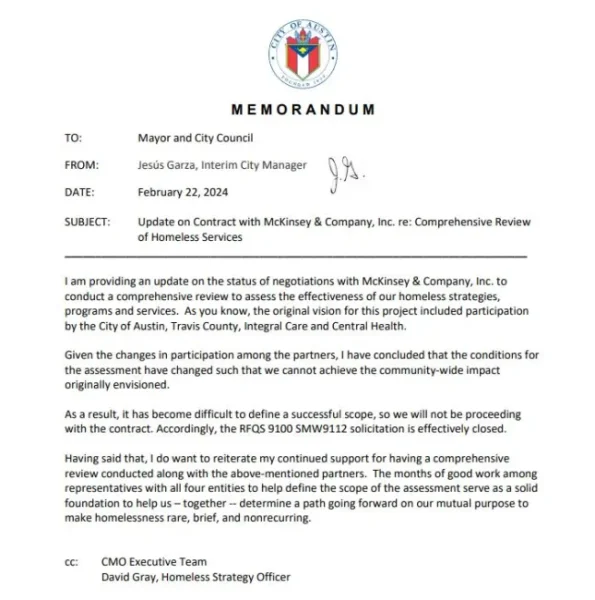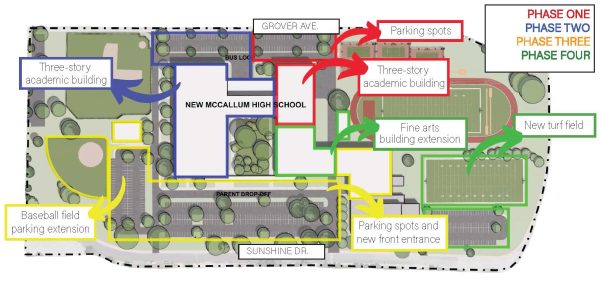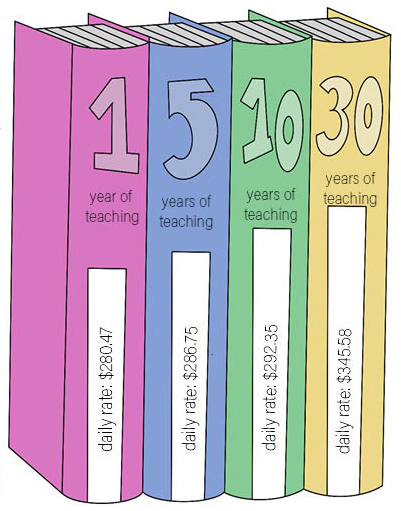AISD to realign sex ed curriculum
New curriculum aims to implement national standards. includes abuse, consent, gender identity
Photo by Jazzabelle Davishines.
Laura Degrush, the community engagement coordinator for AISD, and Kathy Ryan, the director of academics, present proposed health curriculum changes and field parent questions at a meeting at Lanier High School on Nov. 13.
December 13, 2018
AISD classes are constantly being revised and adjusted, but one class is preparing for some dramatic shifts.
The district has revised its Human Sexuality and Responsibility Curriculum to change what is taught in health classes, particularly at the elementary level. There are national sexuality education standards for this kind of curriculum, some of which were not being met currently under the previous AISD curriculum.
The state of Texas also has its own standards for educational curricula in its public schools, called the Texas Essential Knowledge and Skills, or TEKS.
“TEKS are a starting point because we want more and better for our students,” said Kathy Ryan, director of academics. “We look at other places, like College Board to see what colleges are expecting from our students. We are going above and beyond what is required by the state.”
The School Health Advisory Council, also known as SHAC, an advisory body made up of parents and community members, requested revision and review in 2012, and again in 2016. By their standards, all curricula should (ideally) have major revision every three to six years. In 2016, minor updates took place at the middle school level, but major change has not been made in over a decade.
We are going above and beyond what is required by the state.
— Kathy Ryan, director of academics
The school board currently anticipates holding a vote on any proposed changes in February.
There is some question over what subjects must be taught, as well as when certain topics should be introduced to students. For example, the curriculum specifies that two topics, the impact of social media on the body and mind, and education covering body parts involving the sexual anatomy, be introduced in the fifth grade.
Another important goal is to provide information on physical, emotional and sexual abuse. Teaching students about consent and refusal skills is part of the national standards; SHAC is figuring out how to incorporate them into the Human Sexuality and Responsibility Curriculum of AISD.
“They need to be given the skills, tools, and language to be able to say ‘No’, ‘Stop’ and ‘Don’t do that,’ as well as the skills, tools and language to respond to that ‘No’ properly,” said Laura Degrush, the community engagement coordinator for AISD.
Currently, the most divisive issue is trying to resolve what subjects should be taught at each grade level. Each lesson, AISD asserts, should be age-appropriate. Parents are now debating what that means for certain topics, including sexual orientation and gender identity, unwanted pregnancies and sexually transmitted diseases.
Parents can elect to opt-out their student from some or all Human Sexuality and Responsibility lessons. Lessons are public to parents and can be found in their school library, alleviating some parent concerns about the transparency of changes being made. Students who are opted-out of the curriculum will be engaged with Social Emotional Learning, or SEL, lessons as an alternative.
They need to be given the skills, tools, and language to be able to say ‘No’, ‘Stop’ and ‘Don’t do that,’ as well as the skills, tools and language to respond to that ‘No’ properly.
— Laura Degrush, the community engagement coordinator for AISD
While the AISD Board of Trustees determines the content parameters of Human Sexuality courses, AISD officials said that they value public participation and input, and that it is vital for the decision-making process. They have implemented an online survey for parents to take to inform the district of their opinions and concerns about the changes in curriculum. It was sent to Campus Advisory Councils and was made available through the Parent Cloud. High school students that are currently enrolled in a health class are also taking the survey as a way for the district to solicit direct input from students. So far, approximately 10 percent of parents in the district have responded to the preliminary survey. The only topic that shows a solid consensus is that of consent; more than 90 percent of parents support it being taught as early as kindergarten.
In addition to the survey, there have been several meetings at AISD high schools in which Degrush and Ryan have provided a detailed presentation on the potential changes to the curriculum. The meetings also provide group table discussions for parents, community members and AISD employees to ask questions and share opinions covering the topics at hand, such as what should possibly be added to the Human Sexuality and Responsibility Curriculum, what should be eliminated and when changes should be implemented.
No matter what changes are proposed, the Human Sexuality and Responsibility curriculum from kindergarten through 12th grade must be abstinence-focused, as mandated by the Texas legislature. Abstinence-focused lessons, however, are different from abstinence-only lessons, which are the standard in some other states. Students can be taught about safe sex, but there must be a bottom line that the only way to be certain that one avoids STDs and unwanted pregnancy is through abstinence.
Though the opinions and concerns of parents, students and community members is being sought out in these early stages, ultimately it will be up to SHAC to draft recommendations for the curricula and up to the Board of Trustees to approve it. Health classes at McCallum may not be changing anytime soon, but future students may arrive with a completely different health curriculum.
















Maeve Walsh • Jan 18, 2019 at 2:18 pm
I think this was an amazingly written article, about a really important subject. This article was both informative and interesting. The title grabbed my eye and made me want to read. I think the quotes you included added impact. I learned a lot of new information from reading this article. And I think everyone should be afforded the information of sex ed and everyone should feel comfortable saying no and the other person should respect that but also know how to respond, I think that is an important thing that not a lot of people know how to do. I think there should be another photograph that could add to the powerful message of this article. I really enjoyed reading, thank you.